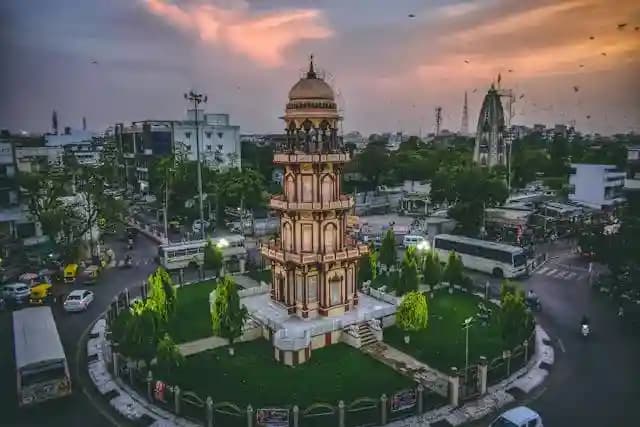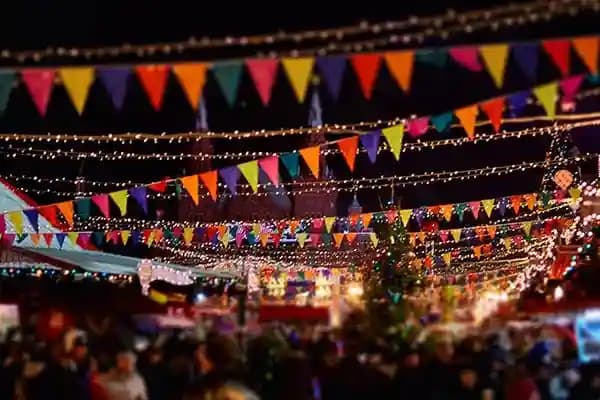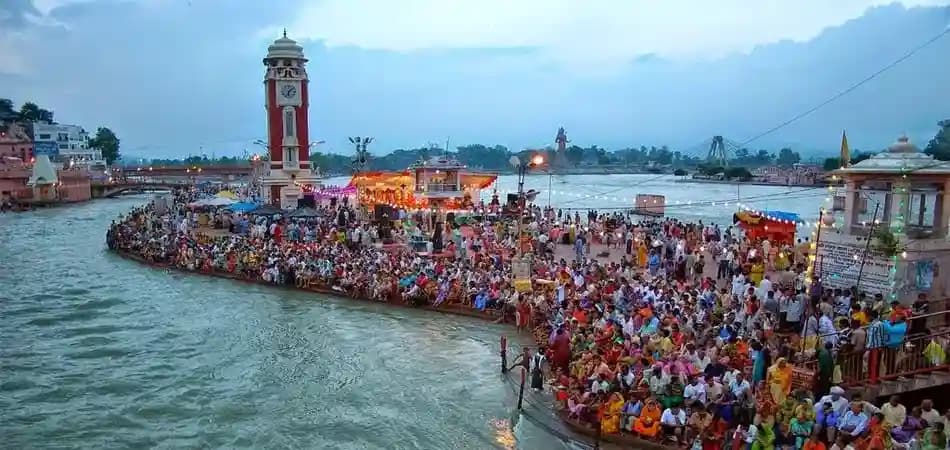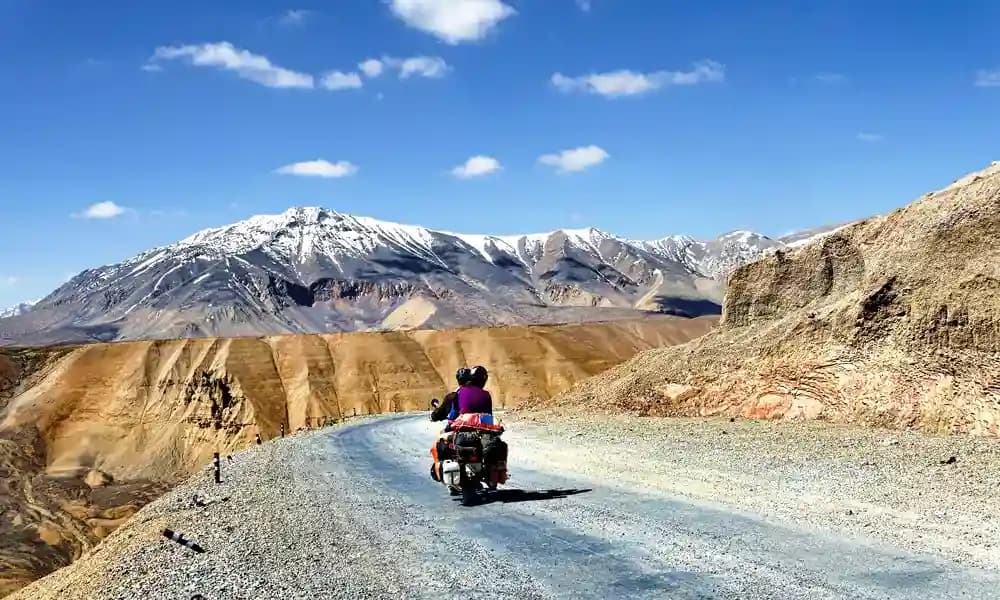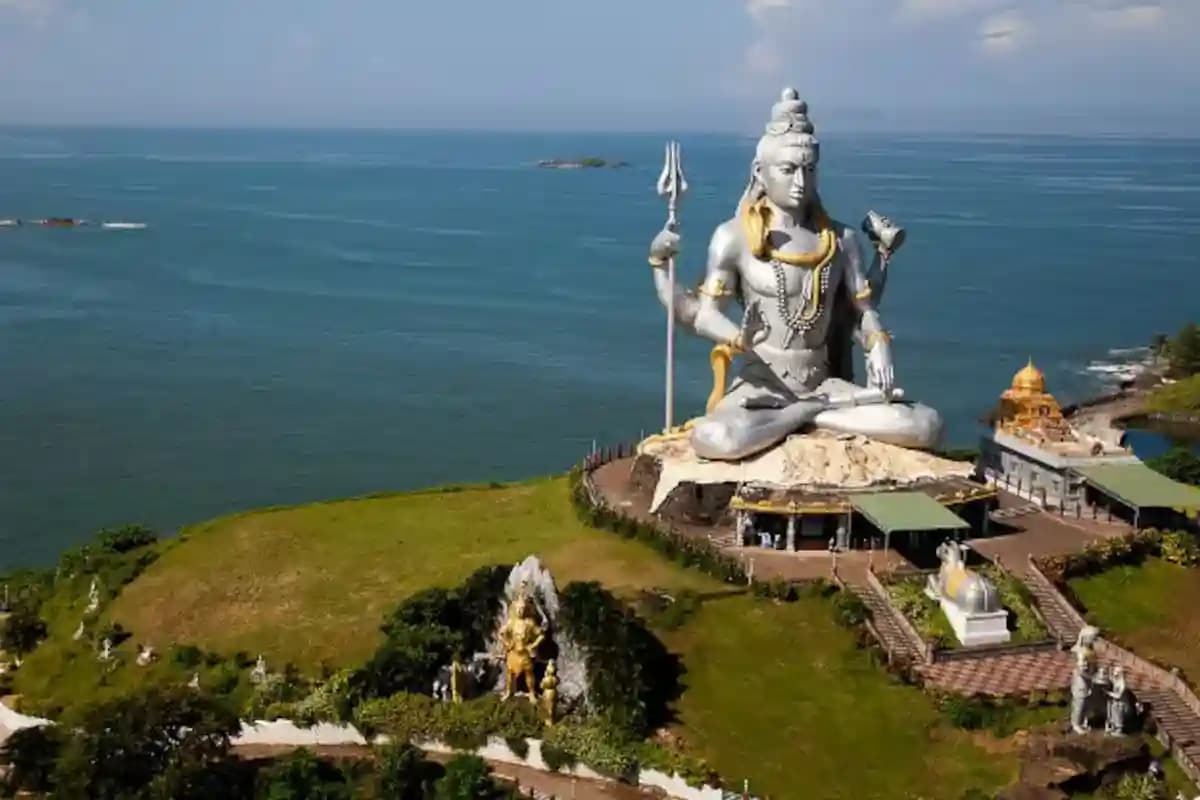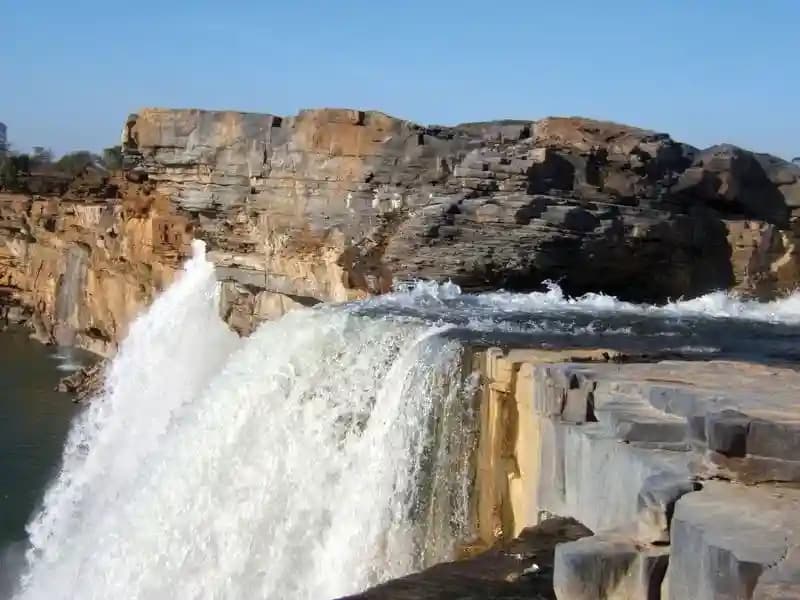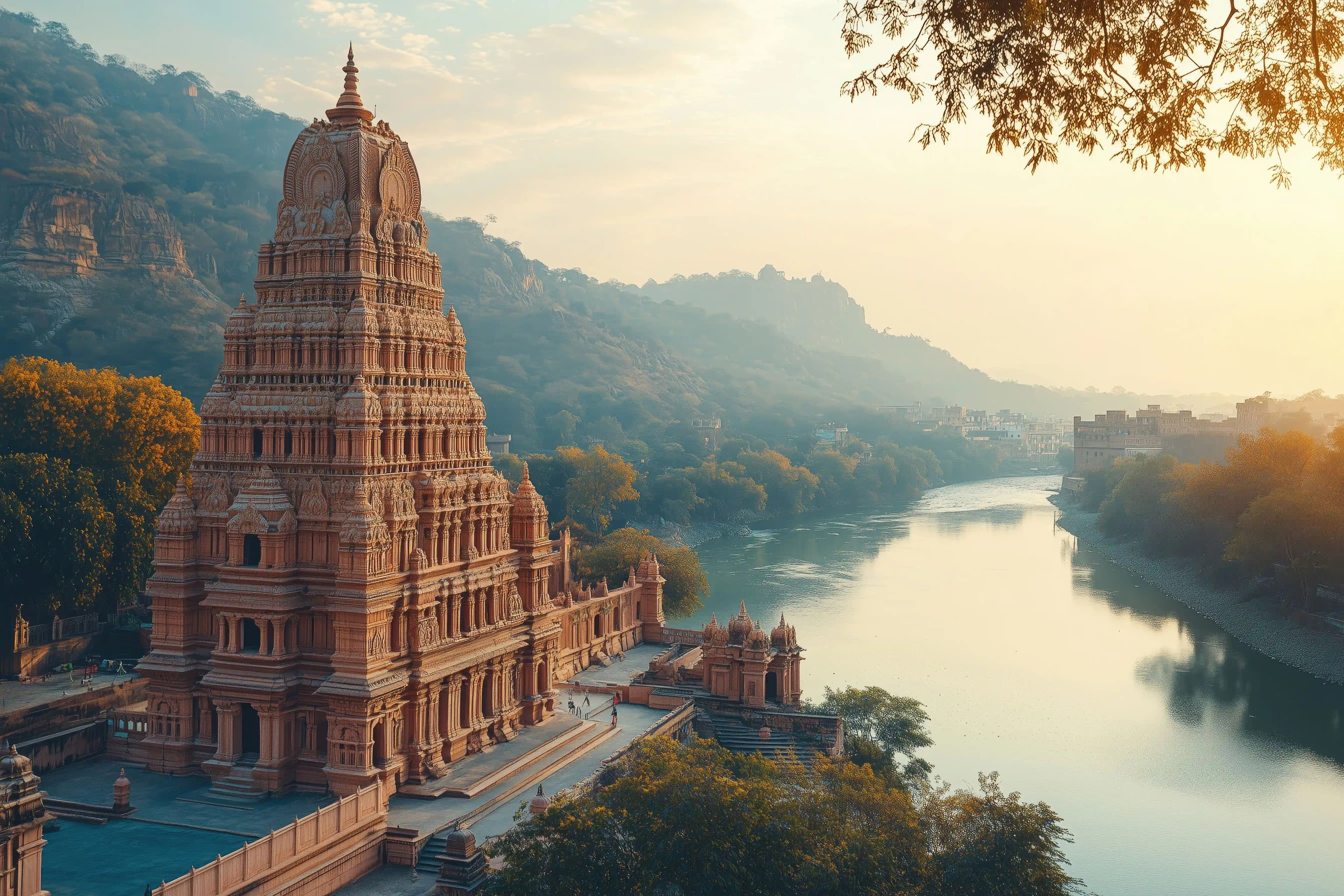India is recognized for its magnificent and widely recognized temples. These are not just massive structures for worship; they are also remarkable because they house numerous treasures and historical stories. Temples of India play a major role in connecting people to their cultures and beliefs. People come to worship, sing, and find peace in these sacred spaces. In this article, we'll take you on an exciting tour to some of the biggest temples in India to make you aware of their majesty and reputation by exploring themes such as the most magnificent temples in India, the largest temple in India, India's wealthiest temple, and many more.
Top 10 Biggest Temples in India You Must Visit
Are you planning to do another India tour? Don't miss the opportunity to explore the country's Top 10 biggest temples in India! These breathtaking temples reflect India's rich cultural and spiritual legacy, providing a look into centuries of dedication and spectacular design. Whether you seek spiritual consolation or are attracted by majestic grandeur, including these largest temples on your trip itinerary will provide you with an amazing experience.
1. Sri Ranganathaswamy Temple, Srirangam, Tamil Nadu

Sri Ranganathaswamy Temple, located in Srirangam, Tamil Nadu, is considered to be the largest Hindu temple in India. This massive building covers 156 acres, making it one of the world's biggest religious complexes. The temple, dedicated to Lord Ranganatha, a reclining avatar of Vishnu, is a stunning example of Dravidian architectural design. The temple site is so large that it resembles a little city, with its very own streets, marketplaces, and even a post office.
Location: Srirangam, Tiruchirapalli , Tamil Nadu
Timings: 6:00 AM – 12:00 PM and 4:00 PM – 9:00 PM
Entry fee- Free
Suggested read: Famous Temples In India
2. Swaminarayan Akshardham Temple, Delhi

The Akshardham Temple in Delhi is considered as India's 2nd largest Hindu temple in the world, and was inaugurated in 2005 and spans an astonishing 100 acres, making it one of the largest Hindu temples worldwide. It is dedicated to Bhagwan Swaminarayan and has over 20,000 elaborately carved stone statues of various deities, saints, and legendary animals.
The temple's centerpiece is a stunning 141-foot-tall structure made entirely of finely carved granite and marble. Its architectural marvels include 234 intricately carved pillars, 9 domes, and 20,000 murtis.
Location: Noida Mor, Pandav Nagar, New Delhi
Timings: 10:00 AM – 6:30 PM (Closed on Mondays)
Entry fee: Free
3. Belur Math, Belur, Kolkata

Swami Vivekananda opened Belur Math, which is now among the top 10 biggest temples in India. This pilgrimage place is located on the banks of the Hooghly River in Kolkata. This is considered to be the biggest temple in India and has temples dedicated to Swami Vivekananda, Sri Ramakrishna, and his spouse, Sarada Devi.
The campus's architecture is a blend of South Indian temple style, European central dome, Buddhist elements, Christian styles, and so on. Aside from the temples, there is a big museum that has remains from the times of Swami Vivekananda, Ramakrishna, and Sarada Devi.
Location: Belur Math, Belur, Howrah, Kolkata
Timings: 6:00 AM – 11:30 AM, 4:00 PM – 7:00 PM
Entry fee: Free
Suggested Read: Lord Shiva temples in India
4. Brihadeswara Temple, Thanjavur, Tamil Nadu

Brihadeeswara Temple is one of the biggest South Indian temples, located in Thanjavur, Tamil Nadu. This 11th-century temple, also known as Peruvudaiyar Kovil and RajaRajeswaram, was constructed by Chola ruler Rajaraja Chola I. The Cholas are recognized for their appreciation of art.
The temple's majestic construction reflects the Cholas' richness and creative talent. It was created using Vaastu Shastra principles and is entirely made of granite stone. The most striking feature of the Brihadeswara Temple is that it casts no shadows on the ground during midday. Dedicated to Lord Shiva, the temple emphasizes the value of religious beliefs in Hinduism.
Location: Brihadeswara Temple, Thanjavur, Tamil Nadu
Timings: 6:00 AM – 12:30 PM, 4:00 PM – 8:30 PM
Entry fee: Free
5. Kashi Vishwanath Temple, Varanasi, Uttar Pradesh

Kashi Vishwanath Temple, located in the world's oldest surviving city, Varanasi, is one of India's most popular temples. It is the one of the most respected of the twelve Jyotirlingas in India. The temple sits majestically on the western bank of the Ganges, teaching humanity the fundamental meaning of both life and death.
A single visit to the Kashi Vishwanath Temple is similar to witnessing all eleven of Lord Shiva's Jyotirlingas. Many prominent people, including Adi Shankaracharya, Swami Vivekananda, Goswami Tulsidas, and Gurunanak, have visited this wonderful sanctuary. A visit to this holy place is thought to be one of the methods to achieve moksha.
Location: Kashi Vishwanath Temple, Varanasi, Uttar Pradesh
Timings: 4:00 AM – 11:00 AM, 12:00 PM- 11:00 PM
Entry fee: Free
Suggested Read: Exploring Brahma Temples In India: A Journey To The Worship Places
6. Mahabodhi Temple, Bodh Gaya, Bihar

Mahabodhi Temple, located in Bihar's historic city of Bodh Gaya, translates to 'Great Awakening Temple. ' It is the only surviving temple out of the 84,000 built by King Ashoka the Great. This blessed sanctuary of serenity is where Prince Siddhartha reached nirvana and became Lord Buddha at the age of 35.
The Great Stupa is mentioned in the travelog of famous Chinese traveler Huen Tseng. The temple's unique and original architectural style has earned a position among the UNESCO World Heritage Sites.
Location- Mahabodhi Temple Complex, Bodh Gaya, Gaya, Bihar
Timings- 5:00 AM – 9:00 PM
Entry fee- Free
7. Lingaraja Temple, Bhubaneswar, Odisha

The Lingaraja Temple is the oldest and one of the biggest Shiva temples in India. This temple is built in the particular Kalinga architectural style and attracts not only religious followers but also historical buffs. Lingaraj's idol generally depicts Lord Shiva, however at this temple it represents both Lord Shiva and Lord Vishnu.
'Harihara' refers to the united form of both gods. Bindu Sagar Lake, which is reputed to have healing abilities, touches the temple on one side. Non-Hindus are not permitted to enter the grounds; hence, they can only admire the spectacular building from an elevated spot outside the temple.
Location: Lingaraj Temple, Old Town, Bhubaneswar, Odisha
Timings: 5:00 AM – 9:00 PM
Entry fee: Free
Suggested Read: Bhimashankar Temple: Divine Escape Near Pune And Mumbai
8. Dwarkadhish Temple, Dwarka, Gujarat

Dwarkadhish Temple, the sacred home of Lord Krishna, is located in Gujarat's Dwarka city. The temple, also known as Jagat Mandir, has two doorways through which pilgrims can enter and depart. Swarg Dwar (doorway to heaven) and Moksha Dwar (doorway to freedom) are the names given to the entry and departure doors.
The 5-storey temple is part of the sacred Char Dham Yatra and is supported by 72 pillars. Situated on the banks of the River Gomti, the temple reaches a height of 51.8 meters and requires a flight of 56 steps to reach Swarg Dwar. Inside the temple, Lord Krishna amazes his worshipers with his black stone statue.
Location- Dwarkadhish Temple, Dwarka, Gujarat
Timings- 6:30 AM – 1:00 PM, 5:00 PM – 9:30 PM
Entry fee- Free
9. Somnath Temple, Saurashtra, Gujarat

Somnath Temple is one of India's most ancient architectural wonders, located in Saurashtra, Gujarat. It honors the Moon God and has a fascinating history. The temple has been demolished and rebuilt multiple times during the last thousand years. According to legend, the temple has been built by Lord Shiva and is one of India's twelve Jyotirlingas. Even if you are not interested in history, you should visit Saurashtra once to view the magnificence and hear the intriguing legends about the temple for yourself.
Location- Somnath Temple, Saurashtra, Gujarat
Timings- 6:00 AM – 9:00 PM
Entry fee- Free
Suggested Read: Complete Guide on Tirupati Balaji Temple: Earth’s Vaikuntha Dham
10. Kedarnath Temple, Garhwal, Uttarakhand

Kedarnath Temple is well-known not just among religious travelers, but also among nature enthusiasts due to its location. The temple is nestled among the spectacular Himalayan glaciers, but in the winter, the entire region is blanketed with snow. That is why it is closed for half the year. This temple is dedicated to Lord Shiva and is said to be constructed by the Pandavas from the Mahabharata. Pilgrims have to walk for more than 14 kilometers to reach their destination.
Location- Kedarnath Temple, Rudraprayag District, Uttarakhand
Timings- 4:00 AM – 3:00 PM, 5:00 PM – 9:00 PM
Entry fee- Free
11. Shree Ram Janmbhoomi, Ayodhya, Uttar Pradesh

The Ayodhya Ram Temple is not only a tribute to religion, but also a work of architectural genius. The temple's design incorporates traditional and modern features to highlight India's cultural diversity. The towering spires, elaborate sculptures, and stately sanctum sanctorum all contribute to an awe-inspiring atmosphere.
As you look at the Shree Ram Mandir Ayodhya temple, you can't help but admire the skill that went into creating a visual symphony of devotion. This temple is one of the biggest temples in India and has become a holy sanctuary where people seek consolation, wisdom, and a closer connection to the divine. The rituals, prayers, and holy ambiance provide followers with a sense of calm and spiritual fulfillment.
Location: Shree Ram Janmbhoomi Temple, Ayodhya, Uttar Pradesh
Timings: 7:00 AM – 11:30 AM, 2:00 PM – 7:00 PM
Entry fee: Free
Suggested Read: Khajuraho Temples: Your Unlimited 2025 Guide
12. Jagannath Temple, Puri, Odisha

Jagannath Temple, also known as Jagannath Puri, was built in the 12th century and is located in Puri, Odisha. Devoted to Lord Krishna, the temple is one of India's Char Dhams. The idols of Lord Balabhadra and Goddess Subhadra are located within the main temple, with Lord Krishna (Jagannath) at the center. Non-Hindus are not permitted to enter the temple's premises.
They can enjoy a wonderful view of this majestic temple from the roof of the Raghunandan Library, which is right opposite the temple. The yearly and world-famous Rath Yatra in Puri allows visitors to see Lord Jagannath, as well as Balabhadra and Subhadra riding atop chariots. With thousands of people dragging the sacred chariot, the yatra is a must-see event.
Location: Jagannath Temple, Puri, Odisha
Timings: 5:00 AM – 12:00 PM, 3:00 PM – 9:00 PM
Entry fee: Free
Conclusion
The biggest temples in India are not only magnificent, stunning structures but also deeply symbolic of the country's rich spiritual tradition. Visiting these holy places is both a spiritual experience and a chance to learn about the country's rich history. Whether you seek spiritual solitude or want to admire the splendor of old Indian architecture, these temples are a tribute to the ageless traditions that have inspired for centuries. So, next time you happen to plan a trip to any of these places make sure to visit these temples to make the most of your spiritual journey.
Frequently Asked Questions
1. What is the biggest temple in India?
The Akshardham Temple in Delhi is frequently acknowledged as the largest Hindu temple in terms of space. However, the Brihadeswarar Temple in Tamil Nadu is one of the largest and best-known.
2. What is the tallest temple in India?
The Ranganathaswamy Temple at Srirangam boasts the highest gopuram (temple tower), measuring 239.5 feet.
3. What is the oldest big temple in India?
The Brihadeswarar Temple in Tamil Nadu was constructed in the 11th century and is one of India's oldest big temples.
4. Which temple has the most visitors?
The Venkateswara Temple at Tirupati is one of the world's most popular temples, attracting millions of visitors each year.
5. Which is the largest temple tower in India?
Raja Gopuram of Ranganathaswamy Temple located in Srirangam, a river island in Tiruchirappalli, Tamil nadu is considered as the largest temple in India.
6. Is Ram Mandir the biggest temple?
No, ram mandir is not the biggest temple of India but is considered as the most significant temple in India.












